The Miraculous Ladybug

The Ladybug, also known as ladybirds or lady beetles, are fascinating insects that are loved by many for their vibrant colors and beneficial role in pest control.
This article will cover everything you need to know about ladybugs, including their physical characteristics, habitat, life cycle, and diet. We will also explore the various species of ladybugs, their significance in pop culture, and the benefits they bring to the environment.
Join us as we dive into the world of these adorable little creatures and uncover their secrets!
Key Takeaways:
- Ladybugs come in a variety of sizes and colors, with a distinctive round body structure that makes them easily recognizable.
- Ladybugs are beneficial insects that help control pests in gardens and are considered good luck by many cultures.
- Ladybugs have a fascinating life cycle and can live up to a year, with different species found all over the world.
What is a Ladybug?
Ladybugs, also known as ladybirds or lady beetles, are small beetles belonging to the Coccinellidae family, typically recognized for their colorful appearance and symbolic significance in various cultures.
These charming insects are often associated with good luck, protection, and love in different parts of the world. In many cultures, spotting a ladybug is believed to bring good fortune or signal impending good news.
Ladybugs’ distinctive red and black spotted bodies have made them a prominent symbol of hope, happiness, and fulfillment.
They are also a reminder to appreciate the simple joys of life and to stay positive amidst challenges.
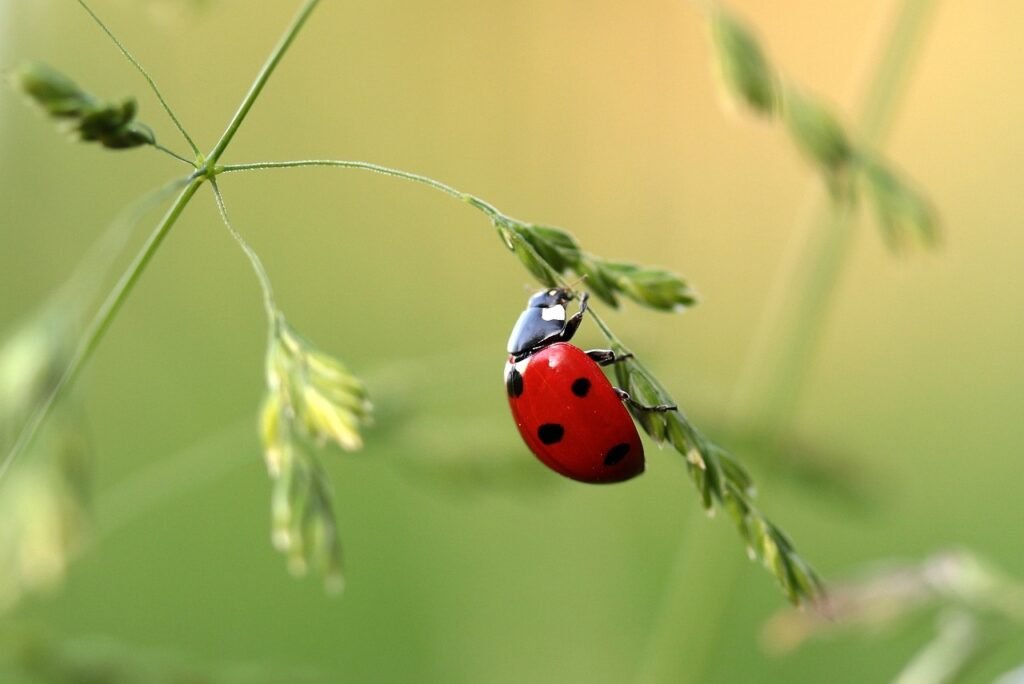
What are the Physical Characteristics of a Ladybug?
Ladybugs exhibit a range of physical characteristics, from their vibrant colors to the unique features of their larvae and the notable presence of orange ladybugs within the species.
These tiny beetles come in various colors, including red, orange, yellow, and even black, with diverse patterns of spots or stripes on their wing covers. The larvae of ladybugs have elongated bodies with black spots and often resemble tiny alligators. What makes orange ladybugs stand out is their striking hue that contrasts sharply against green foliage, making them easily recognizable in gardens and fields.
What is the Size of a Ladybug?
The size of a ladybug varies depending on the species, with most adult ladybugs measuring between 0.3 to 0.4 inches in length, making them relatively small insects compared to other beetles.
Some ladybug species can be smaller, measuring as tiny as 0.03 inches, while larger ones can reach up to 0.7 inches in length. For example, the Convergent Lady Beetle, often found in North America, falls on the larger end of the spectrum, while the Twice-stabbed Lady Beetle tends to be on the smaller side. The sheer diversity in sizes among ladybugs is fascinating and showcases the adaptability of these colorful insects to various ecosystems.

What are the Different Colors of The Ladybug?
Ladybugs come in a spectrum of colors, including the iconic red with black spots, but also shades of yellow, black, orange, and even brown, each color bearing symbolic significance.
Red and black are the classic colors associated with ladybugs, signifying protection and good luck in various cultures. Some ladybugs exhibit a striking yellow hue, bringing a vibrant twist to their appearance. There are species with a darker, almost brownish coloration, adding a sense of diversity to these beloved insects.
What is the Structure of a Ladybug’s Body?
The structure of a ladybug’s body consists of a distinctive round shape, compact wings for flight, and six jointed legs, embodying both practical functionality and symbolic significance in various cultures and beliefs.
Among the most prominent features of a ladybug’s body is its thorax, which connects its wings and legs, allowing for agile movements both in the air and on various surfaces. The vibrant colors adorning their wing covers serve as visual signals to predators, warning of their toxic taste and protecting them from harm. Ladybugs, known for their ability to consume aphids and other plant-eating pests, play a crucial role in maintaining ecological balance, making them celebrated creatures in the realm of natural pest control.

Creating Your Healing Garden
Starting a healing garden can be both therapeutic and rewarding. Choose a sunny spot in your yard and consider plants that are suitable for your region’s climate. Remember to use organic soil and avoid chemical pesticides to keep your remedies as natural as possible. To learn more about creating a healing garden Click Here
What are the Habitat and Distribution of Ladybugs?
Ladybugs inhabit diverse habitats ranging from gardens and fields to forests and urban environments, with occasional instances of ladybug infestations in specific regions.
These colorful insects are attracted to areas with ample vegetation, such as flower beds and orchards, where they can find a plentiful supply of aphids, their primary food source. Ladybugs also thrive in deciduous trees and shrubs, where they can seek shelter and reproduce. In forests, they play a crucial role in maintaining ecological balance by preying on harmful pests.
In certain circumstances, ladybugs can gather in large numbers, leading to infestations that may cause damage to crops and plants. Farmers in some regions have to implement control measures to manage these invasions and protect their harvests. Despite these occasional challenges, ladybugs remain beneficial allies in natural pest control and are welcome guests in most habitats they inhabit.
Where do Ladybugs Live?
Ladybugs can be found in various locations worldwide, where they lay their eggs on plants and foliage, with some species like the green ladybug preferring specific habitats for nesting.
The egg-laying sites of ladybugs are diverse, ranging from tree bark and leaves to herbaceous plants and even buildings. Green ladybugs, in particular, show a preference for plants such as dill, cilantro, and fennel. These insectsare often attracted to areas abundant in aphids, their favorite food source, making them beneficial predators in gardens and agricultural fields. They tend to seek out environments with ample food supply, shelter, and a suitable climate for their development stages, which include egg, larva, pupa, and adult.

What are the Different Species of Ladybugs?
Ladybugs comprise numerous species across the globe, with distinct variations such as the Asian beetle often confused with traditional ladybug species, and special types like the Japanese ladybug.
One interesting aspect of ladybug diversity is the variation in physical appearance among different species.
For example, the Asian beetle, also known as the Asian lady beetle or harlequin ladybug, can be easily mistaken for traditional ladybugs due to their similar size and shape, but they often have different color patterns and markings.
On the other hand, the Japanese ladybug, specifically the Harlequin Ladybird, is a unique species characterized by its red color with black spots.
This diversity in ladybug species showcases the fascinating range of adaptations and characteristics within this beloved insect group.
Where are Ladybugs Mostly Found?
Ladybugs are predominantly found in regions with temperate climates and abundant plant life, evoking spiritual meanings and often depicted in art and clipart for various symbolic representations.
In the natural world, ladybugs can often be spotted in gardens, fields, forests, and meadows where they find plenty of plants to feed on and hide among. These colorful beetles are known to frequent temperate climates, making them a familiar sight in many parts of the world.
- Known for their association with good luck and protection, ladybugs have deep symbolic meanings across different cultures. They are believed to bring fortune, love, and positive transformations to those who encounter them.
Discover the fascinating world of the dragonfly in our latest article, where we delve into the life and secrets of one of nature’s most elegant predators. From their extraordinary flight capabilities to their unique role in the ecosystem, the dragonfly is a marvel of evolution. Learn about the incredible journey of the dragonfly, from nymph to aerial acrobat, and how these insects impact our world in ways we’re just beginning to understand. Click now to uncover the mysteries of the dragonfly and be amazed by the wonders of the natural world!
What is the Life Cycle of The Ladybug?
The life cycle of a ladybug involves distinct stages from egg to larva, pupa, and finally adult beetle, each phase playing a crucial role in the development and survival of the species.
Starting from the eggs, laid in clusters on the underside of leaves, these tiny structures are often yellow or orange and hatch within a few days. Once hatched, the larvae emerge, looking quite different from the familiar adult ladybug, usually with spiky bodies and elongated shapes. They voraciously feed on aphids and other pests, growing rapidly before entering the pupal stage. During pupation, the transformation occurs, turning the larvae into the recognizable ladybug shape we are familiar with. The adult ladybug emerges, ready to continue the cycle by consuming harmful insects and laying eggs to start the process anew.
What are the Stages of a Ladybug’s Life Cycle?
The stages of a ladybug’s life cycle include egg, larva, pupa, and adult, with each phase marking essential milestones in the growth and development of the insect, occasionally affected by factors like ladybug infestations.
Ladybugs begin their journey as tiny eggs attached to the underside of leaves, providing protection from predators. When these eggs hatch, they release hungry larvae that consume aphids and other pests with voracious appetites. The larval stage is characterized by rapid growth and molting to accommodate their increasing size and appetite. After this phase, the larvae enter the pupal stage, where they undergo a transformation inside a protective cocoon before emerging as adult ladybugs. Adult ladybugs are crucial for natural pest control, often preying on harmful insects in gardens and agricultural settings.
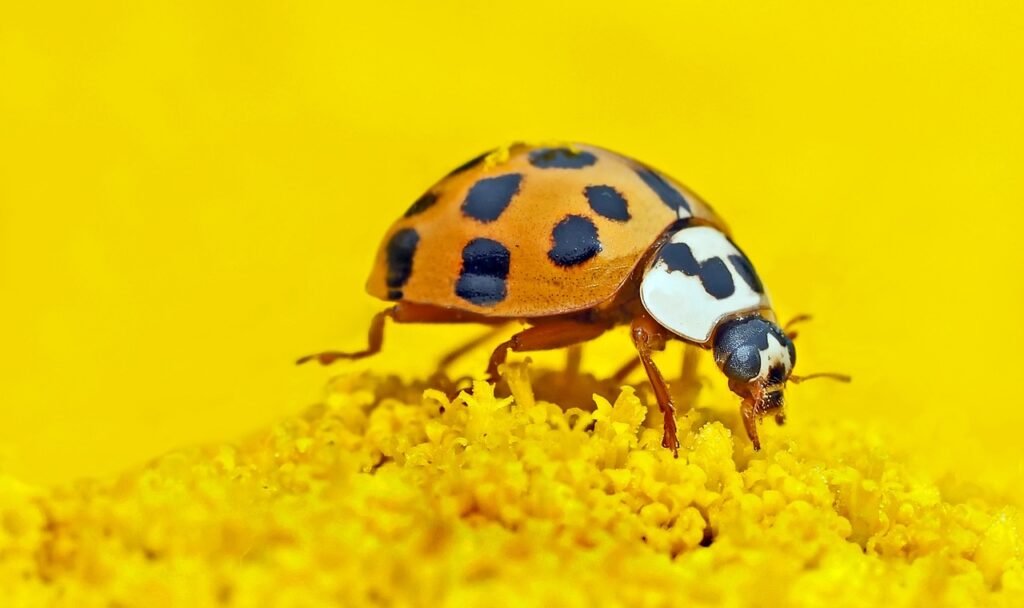
How Long Do Ladybugs Live?
The lifespan of ladybugs varies depending on factors like species and environmental conditions, with typical adult ladybugs living for several weeks to a few months, symbolizing renewal and transformation in various cultures.
Ladybugs belong to the Coccinellidae family, encompassing over 5,000 species worldwide.
Despite their small size, ladybugs play a crucial role in regulating aphid populations, making them valuable assets to farmers and gardeners.
Interestingly, the color and pattern of a ladybug’s spots can also influence its longevity, with variations impacting their ability to camouflage and deter predators.
In some cultures, ladybugs are viewed as harbingers of good luck and protection, believed to bring blessings and grant wishes to those who encounter them.
What Do Ladybugs Eat?
Ladybugs are voracious predators that primarily feed on aphids, small insects, and plant pests, making them beneficial allies in natural pest control.
These tiny beetles can devour hundreds of aphids in a single day, helping to protect gardens and crops from infestations. Their diet also includes other soft-bodied insects like mealybugs, scale insects, and mites, which they consume with equal gusto. Ladybugs are attracted to areas with high insect populations, as this provides them with a plentiful food source to sustain their appetite. Plus being effective predators, ladybugs are also known to play a crucial role in maintaining ecological balance by keeping pest populations in check.

Do Ladybugs Eat Plants?
Ladybugs do not consume plants but are instead known for their appetite for small insects and pests, making them valuable allies in agricultural settings for natural pest control, with rare instances of ladybug bites occurring due to defensive behaviors.
These colorful beetles feed on aphids, mites, and other common garden pests, helping to keep their populations in check. By preying on these insects, ladybugs play a crucial role in maintaining the ecological balance of gardens and farmlands.
Their distinctive spotted appearance serves as a warning to potential predators, indicating their toxic taste. While ladybug bites are rare and usually harmless to humans, they may occur when the beetle feels threatened or cornered.
Ladybugs In The Garden
Ladybugs play a crucial role in garden ecosystems by preying on harmful pests like aphids, protecting plants and crops from damage, with some species laying their eggs near infested areas to ensure food availability for their offspring.
These small, colorful beetles are often referred to as nature’s pest controllers due to their voracious appetite for destructive insects. Their presence in gardens can lead to a significant decrease in pest populations, making them an eco-friendly alternative to chemical pesticides.
Ladybugs are known for their distinctive spotted appearance, which serves as a warning to potential predators, signaling their toxicity. The act of egg-laying near aphid-infested plants helps the newborn ladybug larvae find an immediate food source, kickstarting their journey as efficient pest hunters.
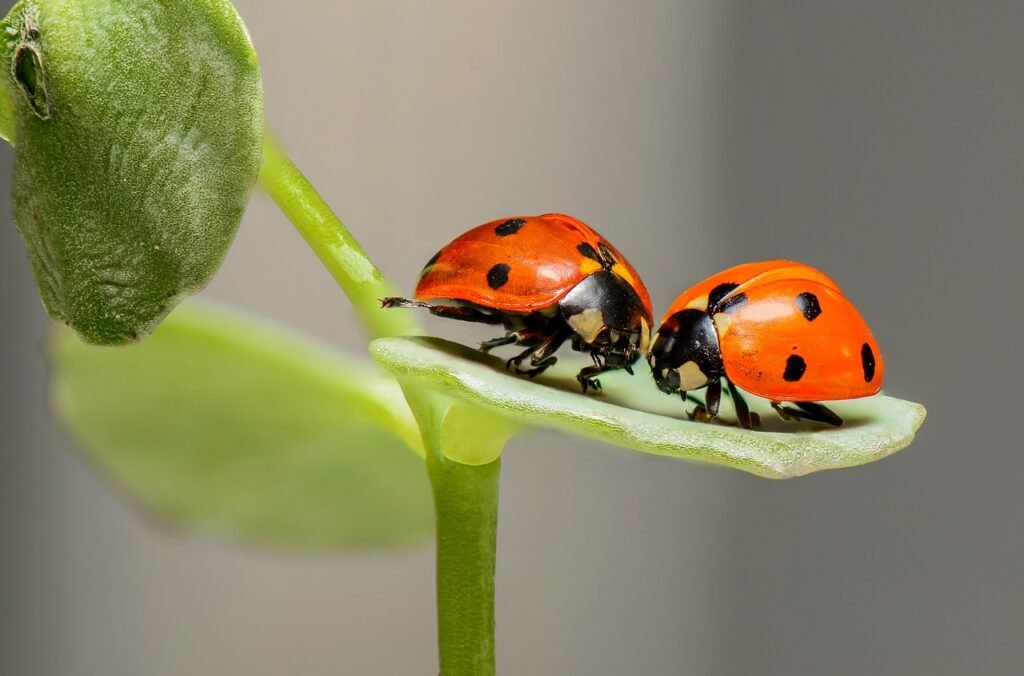
What are the Predators of Ladybugs?
Ladybugs face predation from various insects and birds that mistake them for harmful look-alike species such as beetles that resemble ladybugs, leading to occasional instances of natural threats to ladybug populations.
Among the insects that pose a danger to ladybugs are lacewings, whose larvae eagerly feed on ladybug eggs. Similarly, birds like sparrows and starlings may accidentally consume ladybugs while foraging for insects. The risk for ladybugs also comes from beetles like the Mexican bean beetle, which share a similar appearance but are destructive pests. This constant threat from a variety of predators highlights the challenges these beneficial insects face in maintaining their populations.
What are the Benefits of The Ladybug?
Ladybugs offer significant benefits to ecosystems and agriculture by serving as natural pest controllers, contributing to biological pest management, and carrying positive associations as symbols of good luck in various cultures.
One of the most remarkable advantages of ladybugs is their voracious appetite for harmful pests such as aphids, mites, and scale insects, helping to keep their populations in check naturally. This predatory behavior not only aids in protecting crops and plants but also reduces the reliance on chemical pesticides, promoting a more sustainable and environmentally friendly approach to pest control.
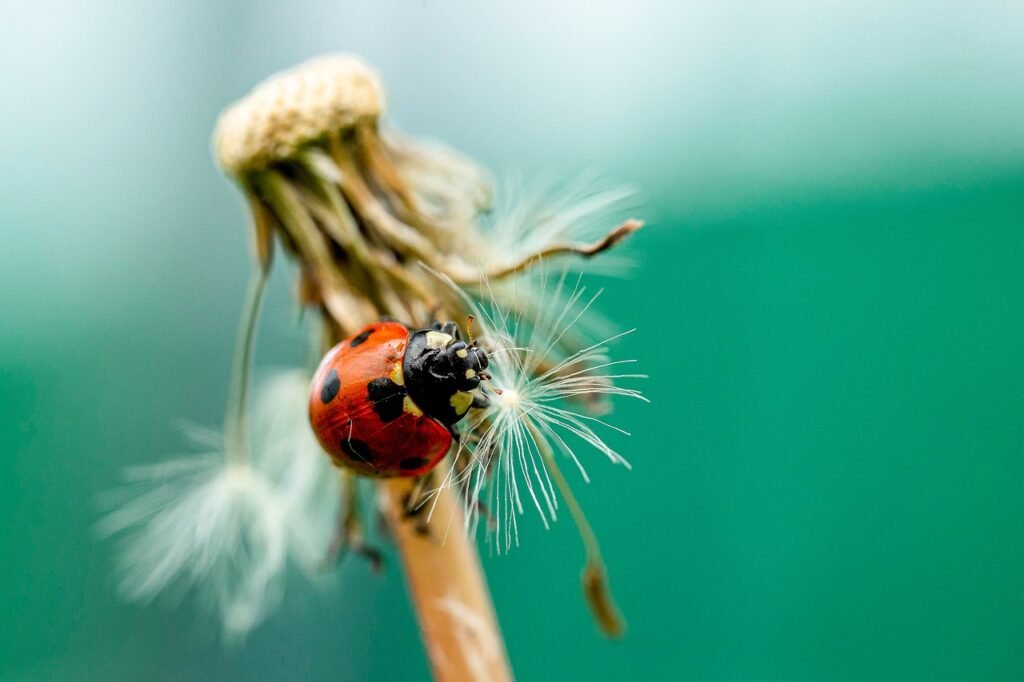
How Does a Ladybug Help with Pest Control?
Ladybugs aid in pest control through their efficient predation on agricultural pests like aphids and mites, utilizing their flight capabilities and life cycle stages to target and eliminate harmful insects, contributing to sustainable farming practices.
Ladybugs, also known as ladybirds or lady beetles, are small insects that play a vital role in maintaining ecological balance by preying on harmful pests, thus reducing the need for chemical pesticides. Their distinctive red or orange bodies with black spots serve as a warning sign to potential predators, a strategy known as aposematism.
Ladybugs exhibit remarkable flight patterns, allowing them to disperse efficiently across agricultural fields, seeking out their prey. Their agile flight helps in covering large areas and reaching pest-infested plants, making them effective pest hunters.
Are Ladybugs Considered Good Luck?
Ladybugs hold positive connotations as symbols of good luck in many cultures, representing prosperity, protection, and blessings, with spiritual meanings deeply rooted in folklore and beliefs across different regions.
In various traditions, ladybugs are linked to protection, often believed to bring blessings and guard against harm. For example, in some Native American cultures, ladybugs are seen as messengers of good fortune and a symbol of protection. In European folklore, it was said that if a ladybug landed on someone, it would bring good luck and protection. This association reflects the universal appeal of these tiny insects as bringers of good fortune and positive energy.
Garden remedies are natural solutions derived from plants and herbs commonly found in gardens. These remedies harness the intrinsic properties of plants to treat illnesses and improve overall health. From the calming lavender to the immune-boosting echinacea, each plant offers unique benefits.
The Ladybug in Pop Culture
Ladybugs hold a prominent place in pop culture, inspiring various artistic expressions like tattoos and drawings that capture the charm and symbolism of these beloved insects in creative and meaningful ways.
Artists often use ladybugs as a symbol of luck, love, and protection in their creations, reflecting the universal appeal of these tiny creatures. In tattoos, ladybugs are frequently depicted crawling on delicate flowers or perched on leaves, adding a touch of whimsy and nature-inspired beauty to the design. The vibrant red and black hues of a ladybug’s distinctive shell make them a visually striking subject for artists to work with, creating eye-catching pieces that stand out. Ladybugs also frequently appear in children’s illustrations, further cementing their cultural significance as adorable and gentle beings in the natural world.
Ladybug Tattoo
Ladybug tattoos have gained popularity as trendy body art choices, often symbolizing themes of luck, protection, and positivity in line with the endearing qualities associated with famous ladybug characters in popular culture.
The iconic ladybug characters have embedded themselves in the hearts of fans worldwide, making ladybug tattoos a charming tribute to beloved animated heroes. From Ladybug in Miraculous Ladybug to Lugi’s Lucky Ladybug,these insects are revered for their cheerful demeanor and unwavering courage in the face of adversity. Drawing inspiration from these characters, people opt for ladybug tattoos as a symbol of resilience, tenacity, and good fortune. The vibrant red and black hues of ladybugs make for visually striking tattoo designs that stand out in a sea of inked bodies.
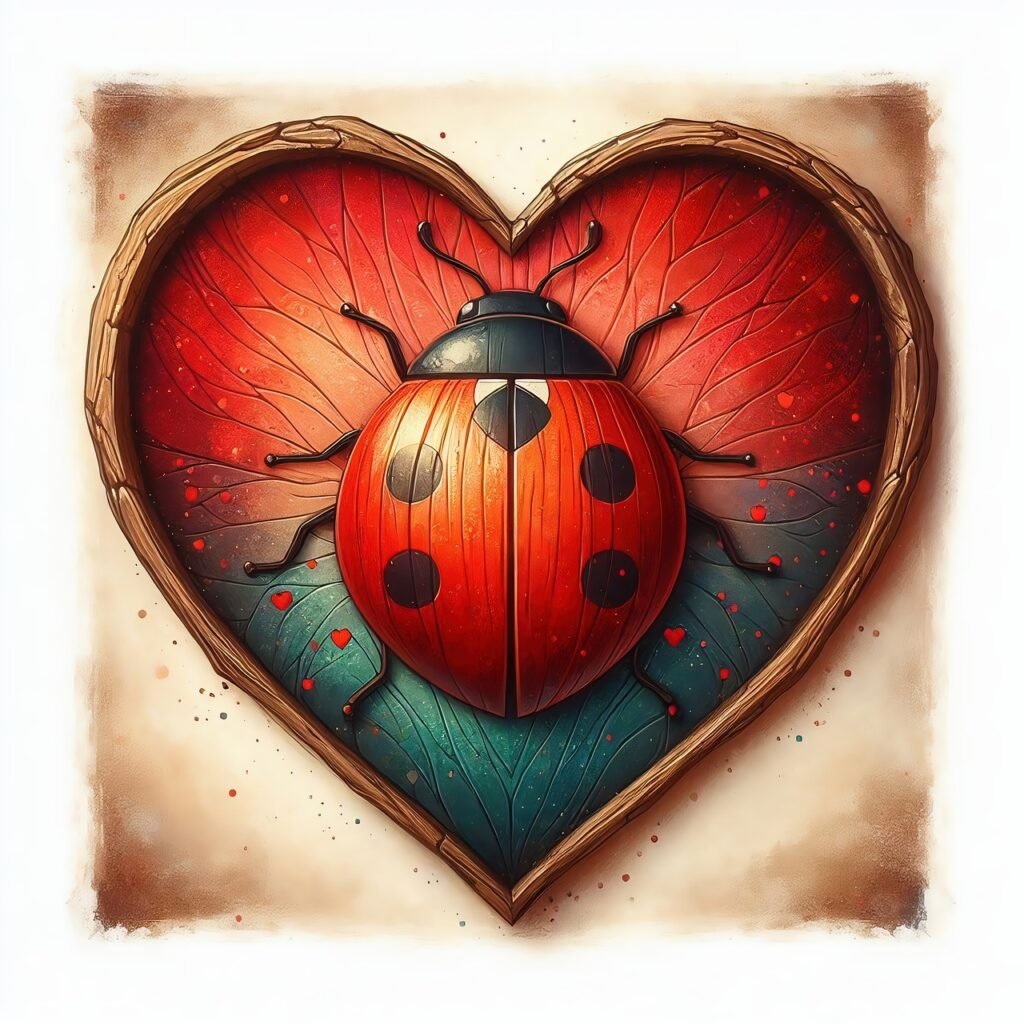
Ladybug Drawing
Ladybug drawings serve as creative expressions of art and design, reflecting the symbolic significance and aesthetic appeal of ladybugs, often utilized in clipart and illustrations to convey themes of happiness, nature, and luck.
These vibrant insect portrayals are not just visually captivating but also hold deeper meanings in various cultures worldwide. The symbolism of ladybugs is associated with good fortune, protection, and love. In the realm of artistic depictions, ladybug illustrations are often integrated with floral designs or whimsical patterns, adding a touch of playfulness and charm to the overall composition.
Artists skillfully harness the distinct red hue and black spots of ladybugs to create eye-catching visuals that capture the essence of joy and vitality. Their aesthetic qualities evoke a sense of harmony and balance, making them popular choices for embellishing stationery, apparel, and home decor items. Ladybug clipart is frequently used in children’s books, educational materials, and greeting cards, enhancing the visual appeal while symbolizing innocence and purity.
Miraculous Ladybug
Miraculous Ladybug, a popular animated series, features captivating ladybug characters embarking on heroic adventures, showcasing the distinct traits and powers of the protagonists, who defend against threats posed by villains including those resembling ladybugs.
The protagonists, Ladybug and Cat Noir, with Miraculous superpowers granted by kwamis, navigate the complexities of teenage life while maintaining their alter egos as defenders of Paris. The dynamic duo’s chemistry and unwavering dedication make them fan favorites among viewers, who eagerly follow their battles against Hawk Moth, the enigmatic supervillain orchestrating evil schemes. The series beautifully weaves in themes of friendship, love, and sacrifice, resonating with audiences of all ages and creating a vibrant world where heroism and villainy collide in colorful and action-packed episodes.
Conclusion on the Ladybug
Ladybugs represent a fascinating blend of beauty, symbolism, and ecological significance, embodying a harmonious connection between nature and human culture that continues to captivate and inspire admiration worldwide.
These delightful insects, with their vibrant hues of red and black, are adored for their striking appearance, often associated with good luck and protection in various cultures.
Ladybugs play a vital role in the ecosystem as natural predators, feeding on garden pests like aphids, thus contributing to plant health and balance in the environment.
Their presence is not only visually appealing but also serves as a reminder of the intricate web of life and the interconnectedness of all living beings.
Frequently Asked Questions
A ladybug is a small insect commonly found in gardens and fields. It is known for its bright red and black spotted appearance and is often considered a symbol of good luck.
There are over 5,000 species of ladybugs in the world, with about 500 of those found in North America.
Ladybugs primarily feed on aphids, mealybugs, and other small insects. They are considered beneficial insects as they help control pest populations in gardens.
No, ladybugs do not bite humans. They may release a small amount of liquid if they feel threatened, but this liquid is harmless to humans and does not contain any toxins.
Yes, ladybugs hibernate during the colder months. They gather in large groups and find shelter in cracks and crevices, emerging in the spring when the weather warms up.
The lifespan of a ladybug can vary, but on average they live for about 1-2 years in the wild. Some species have been known to live up to 3 years.





